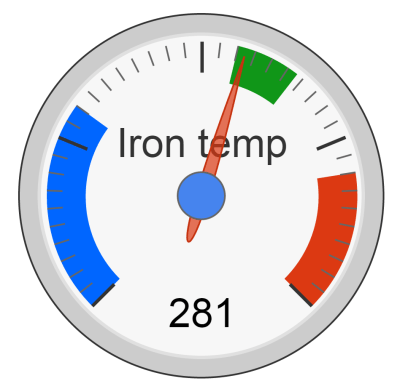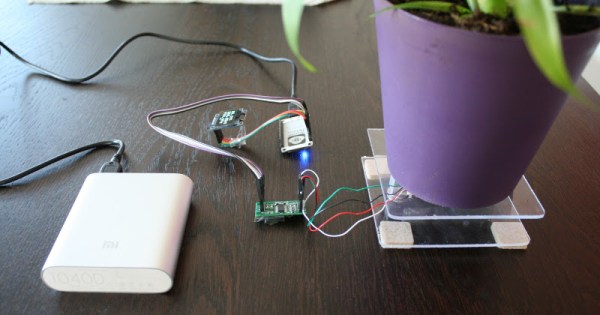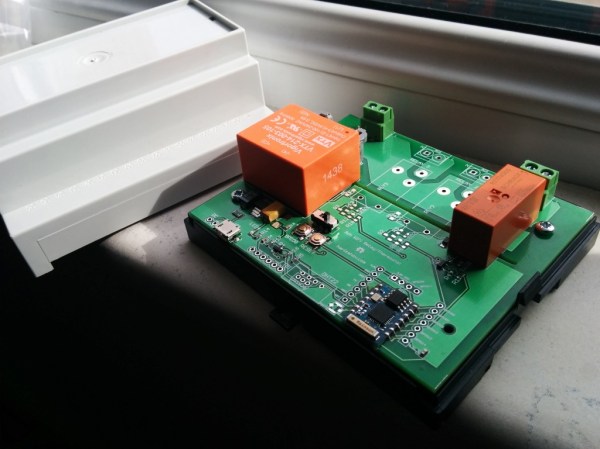There’s a good number of hacks, and commercial products, for telling you when a plant needs watering. Most of them use an ADC to measure the resistance in the soil. As the soil’s moisture content drops, the resistance increases. High impedance, dead plant.
[squix]’s Thirsdee takes a different approach to plant health monitoring. Instead of measuring resistance, it simply weighs the plant. As the soil dries up, it gets lighter. By measuring the change in weight, the amount of water in the pot can be estimated.
Thirsdee uses a load cell to measure the weight. It’s read using an HX711 ADC, which is controlled by a NodeMCU. This development board is based on the ESP8266 chip. Since Thirsdee has WiFi, it can push notifications to your phone and log data on ThingSpeak. If you’re looking at the plant, an OLED shows you the current status of the plant. For us viewing from home, we can see a graph of [squix]’s plant drying out in real time.
[squix] provides us with a list of suppliers for the parts, and all the source code on Github.



 The data pushes out to the Thingspeak server which handles pushing data out to the bigger network, and data representation (like the cool Google gauge in the picture). The best part: [Vegard] gets a phone notification when he accidentally leaves his soldering iron on. How perfect is that?
The data pushes out to the Thingspeak server which handles pushing data out to the bigger network, and data representation (like the cool Google gauge in the picture). The best part: [Vegard] gets a phone notification when he accidentally leaves his soldering iron on. How perfect is that?











